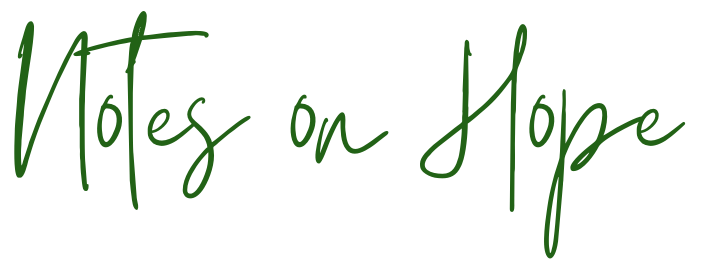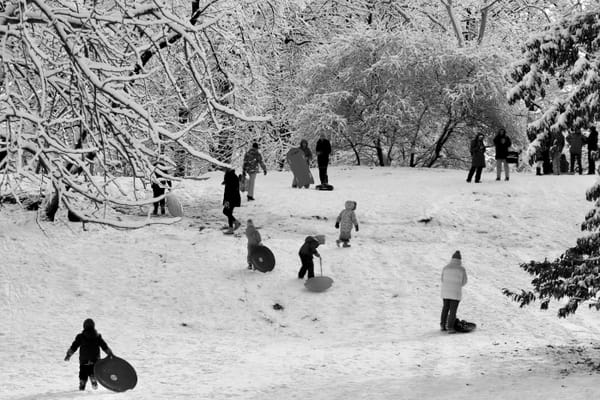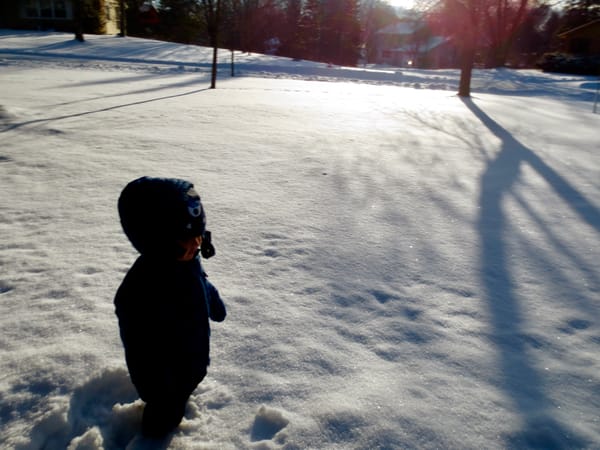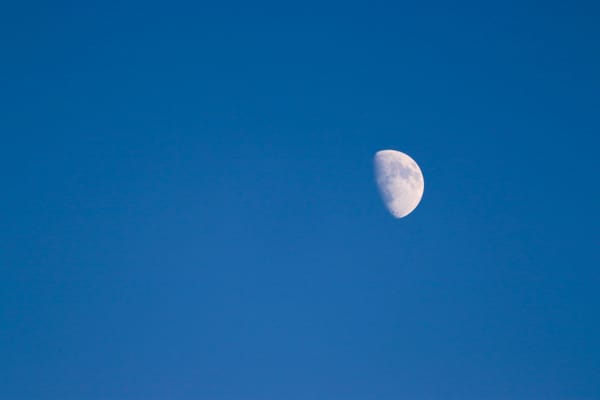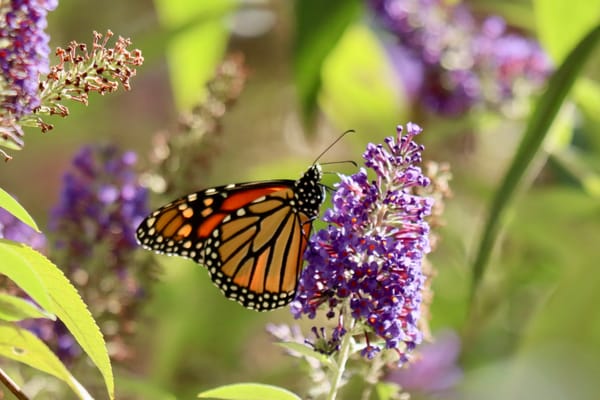Embrace for Impact
Critical lessons in friendship, fidelity, and courage
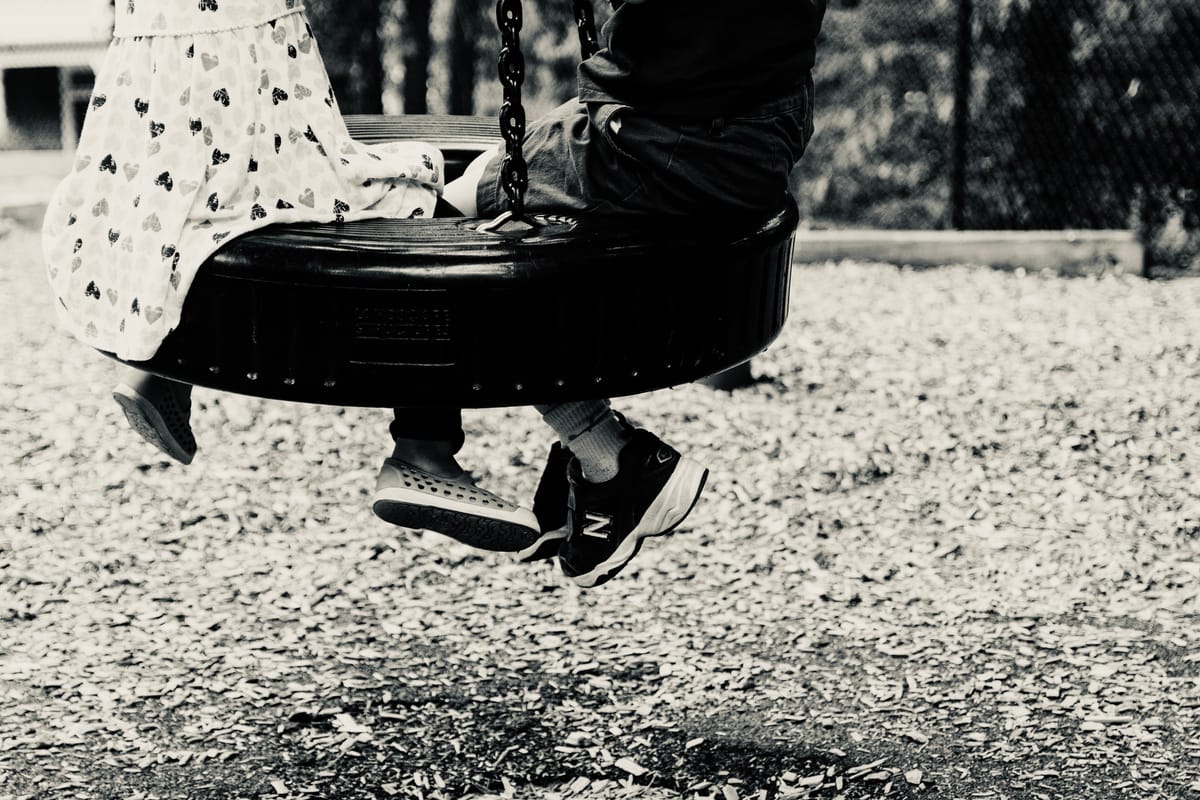
On the beach, at dawn:
four small stones clearly
hugging each other.
How many kinds of love
might there be in the world,
and how many formations might they make
and who am I ever
to imagine I could know
such a marvelous business?
~Mary Oliver
One of the biggest chasms of perspective between adults and children is that adults believe children go to school to learn, and children believe they go to school to see their friends. Even in environments where learning involves highly engaging explorations of topics children are intrinsically curious to learn about, they usually still see these pursuits as fringe benefits of being with their friends. Learning may be the task children are collectively participating in, but their friendships are the animating force.
As adults, we tend to reverse this dynamic. Over time, as our purpose driven lives take shape, our friendships become a byproduct of whatever our task at hand may be, rather than the task itself. This is necessary to some extent. Adulthood entails taking on responsibilities, both within our individual lives and more broadly, that require a shift of focus. But there is a loss that accompanies this shift. As our gaze pivots from viewing our activity through the lens of relationships, to viewing our activity as the end in itself, personal connections—at least those that fall beyond the most immediate and nuclear—tend to become secondary, even as they may be valued.
I’ve been wondering lately what we sacrifice, both privately and in larger social and political ways, by moving people to the periphery of our motivation. What might we gain from leaning more intentionally into the perspective of children—into viewing our activity as inherently for each other, not simply alongside each other?
Through the turbulence of the past several weeks, one conversation that has been circulating pervasively has been rooted in efforts to explain why people, especially women, often act against their own interests, whether those interests are tied to personal safety and autonomy or to economic security. These are important conversations, anchored in a long history of the lures and lies that concentrate and uphold power.
But another more painful question has to do with having one’s own interests repeatedly dismissed and sacrificed by others. There is an exhaustion in constantly needing to defend one’s humanity. And there is a very real sense of betrayal felt by those who have continuously struggled to have their basic existence valued, while each step forward is met with a backlash that reasserts their vulnerability. Being constantly sacrificed on the pyre of other people’s power and safety makes it hard to maintain hope for progress and for our collective potential. As author, Robert Jones, Jr., has said:
“We can disagree and still love each other unless your disagreement is rooted in my oppression and denial of my humanity and right to exist.”
This (frequently misattributed) quote is usually used as an explanation for breaking ties with people who step over the line from disagreement into oppression, even as they assert that this stance can exist within their love. The choice to protect one’s own humanity instead of preserving relationships that disavow it can be central to spiritual survival. This is a choice that is painfully familiar to those who are often sacrificed, and it is important to understand.
In addition to considering what this idea reveals about our relational choices, though, I think it is also important to explore what it says about the nature of love in the first place. The most powerful reading of Jones’ words is not simply as a justification for self-protection, but as a reminder that love cannot exist within the context of dehumanization—that the very definition of love is a deep feeling of shared humanity, and without that it withers.
This does not mean that love is impervious to foundational betrayals. The prism of our own experience can easily distort our ability to see each other clearly and to identify the moments when we betray each other’s worth. “Disagreements” that may seem peripheral from within a perspective of relative safety can cut to the bone and feel viscerally threatening to someone who does not exist within these same protections. Relationships can sometimes persist through these failings, but only when we are willing to dig deeper into our love, until we understand where our perception of another person may have become warped by the glass of personal experience that we peer through.
Absent love and personal connection, however, this task becomes much more difficult. Our brains did not evolve to wade through data or logic, so objective attempts at persuasion can’t help but fail to convince us to see each others’ value and stand up for those outside our own most immediate life experience. Instead, we understand others and commit to the work of deepening our understanding when we cultivate our sense of connection to them, or to their story, and in that feeling of connection embrace their identity as inherently tied to our own. This intentional embrace allows us to see our own humanity on the line when someone else’s is threatened.

As I reflect on the relationships in my own life that have helped to foster this capacity, two relationships that spring to mind most readily are among the earliest. I don’t think this is a coincidence. Young children’s friendships are powerful and all consuming, and they fertilize the soil of future bonds. By happenstance, two of my first friends moved through the world within identities objectively different from my own, and I still feel the rivers that those early connections carved within me each day.
First, there was the next door neighbor, who would become my most sustained and sibling-like friend, and who bent gender norms from an early age in ways that I experienced as integral to who he was, not as divergent from any pre-set expectation. If anything, rather than viewing him through externally established norms, I think our intertwined childhoods made me suspicious of those who operate within and insist upon more rigid identity structures. Children interpret their early experiences as indicative of norms, and so flexibility and fluidity became norms in my eyes because of him. These early friendships become paradigms that we carry with us.
And then there was my first school friend, a four-year-old Black girl in my preschool, who became the touchstone of my classroom days in the exuberant and full-hearted way that our first friendships away from home do. These first school relationships are so tied to the experience of staking out independence that they work their way, powerfully, into our autonomous identities. Her dad was a helicopter pilot, and we would sit side-by-side and gaze across the Hudson River, watching for him as we played. At Christmas, her mom dusted their apartment windows with frosted snow, which I thought was magical. I still think of her whenever I see a helicopter hovering over the water or a cozy winter window.
I would never argue that these early relationships, which were formed out of a mix of proximity, luck, and shared interest, made me impervious to bias or misunderstanding. Each of us, regardless of our individual vulnerabilities, unique identities, or personal relationships is capable of missing the mark in understanding others, whose vulnerabilities and differences don’t overlap easily with our own. But, to an extent, we are raised by our friends as much as we are by our families, and our friendships weave their way into our hearts in ways that allow us to feel a part of ourselves being threatened when someone who matters to us is threatened. And the more varied our tapestry of friendships becomes, the more easily we see a little bit of ourselves in a wider range of people, and the more expansive the spheres of experience we feel driven to protect become. There is evidence of this in the research on friendship, as well as in the history of progress toward social acceptance across race, gender, sexuality, and disability.
As the world has, once again, grown dizzyingly turbulent, and our differences and vulnerabilities have taken on the stark magnification of bright red targets, I think we will need to become much more disciplined and vigilant in our commitment to see ourselves and our loved ones reflected in every threat, and to protect those who are most likely to be at risk with the same full bodied love, exuberance, and ferocity that young children bring to their earliest bonds. Children can surely be just as fickle, biased, and cutting as the rest of us, at times. But if you’ve ever seen a child defend a best friend against a perceived playground injustice, this is the spirit of defiance and protection we all need to muster now. As the playwright Tennessee Williams said,
“The world is violent and mercurial—it will have its way with you. We are saved only by love—love for each other and the love that we pour into the art we feel compelled to share: being a parent; being a writer; being a painter; being a friend. We live in a perpetually burning building, and what we must save from it, all the time, is love.”

It is striking to me, amidst the appropriately serious focus on global threats at the moment, how significantly the role of personal relationships plays in even the most large scale warnings. Historian Timothy Snyder’s book, On Tyranny, which has been circulating voraciously around social media and the news, provides a stark warning about our potential path toward authoritarianism and a clear instruction manual for how to avoid the worst possible repetitions of the past. Of note, among his twenty elegantly clear lessons, at least five involve attention to the way we practice and maintain our intimate, everyday encounters and relationships.
Several of his lessons point directly to the importance of friendships and to the particular importance of expanding our circles of friendship across difference and geography. And, perhaps most simply, in lesson twelve, he advises,
“Make eye contact and small talk. This is not just polite. It is part of being a citizen and a responsible member of society. It is also a way to stay in touch with your surroundings, break down social barriers, and understand whom you should and should not trust.”
Allusions to day-to-day relationships, to maintaining connections and establishing new ones, and direct references to friendship pepper this guide to surviving global threats. The intimacies of our lives matter greatly. They teach us to care, to see humanity in one another, and to hold onto our own humanity tenaciously.
As author and researcher, Andrew Solomon notes, the scope and texture of our relationships is as essential to our survival and communal flourishing as biodiversity is to the survival of the planet. He says,
“I don't accept subtractive models of love, only additive ones. And I believe that in the same way that we need species diversity to ensure that the planet can go on, so we need this diversity of affection and diversity of family in order to strengthen the ecosphere of kindness."
Maya Angelou also reminds us of how to maintain this outlook of mutual dependence even in dark times. She says,
“I had a lot of clouds, but I have had so many rainbows. And one of the things I do…I bring everyone who has ever been kind to me with me. Black, white, Asian, Spanish speaking, Native American, gay, straight. Everybody. I say, come with me, I’m going on the stage. Come with me. I need you now.”
Take a moment to ground yourself in her wisdom. We need each other now.
Finally, because we are often better at expressing these messages to our children than living them ourselves, we can also find wisdom and grounding in the voices that speak directly to children. There is a reason adults are frequently drawn back to Mr. Rogers, Jim Henson, and Sesame Street in chaotic times. These voices, who have so adeptly translated the human experience for our children and communicated our highest values to them, can take us back more viscerally to those very values within ourselves than voices aimed at adults. Listen to them. In shaping their message for a child’s ear, they speak directly to our heart.
Wishing you the heart to see humanity all around you, the attention to notice when it is under threat, and the courage to defend it,
Alicia
Note: The title of this post, “Embrace for Impact,” is borrowed from Baratunde Thurston, who borrowed it from Mohawk elder, Katsi Cook, who borrowed it from Peter Buffet—evidence of a the ripple effect our care and our language can have.
If you think someone else in your life might need some hope, please share. It’s always easier to hold onto hope when we’re not doing it alone.
